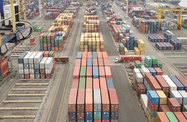 On establishing a more conducive environment for the creative economy to flourish
On establishing a more conducive environment for the creative economy to flourish
How do you assess the opportunities and obstacles to developing strong creative industries in the Philippines?
PAOLO MERCADO: The creative industry in the Philippines registered growth of 12.7% between 1999 and 2010, according to the Intellectual Property Office, which was significantly higher than the economy-wide rate of GDP growth over the same period. In 2010 the industry generated around P640bn ($12.6bn) in revenue, which comprised 7% of the total economy. It was a very positive trend for a sector that has long gone unrecognised and lacked incentives.
This lack of consistent monitoring is the first challenge. The second problem is the absence of any intellectual property strategy. The Philippines makes a considerable contribution to many international creative content products, from music to animation and illustration, yet retains no intellectual property rights. Thus, the creation of national intellectual property capital that generates revenue through licensing or royalties is crucial for the industry’s future. The country has the potential to do so, given its well-educated population, remarkable English language skills, experience within the industry and cross-cultural mindset, as these traits broaden the international reach of creative products.
There is also significant potential to transition from business process outsourcing (BPO) to creative industries. The first stage requires that we work on less complex creative content, such as fast and low-cost design outsourcing. The second stage involves developing the production chain in order to provide more value-added offerings, such as special effects. The third and final stage would be to advance the industry by creating our own intellectual property products. BPO industries are a good example to follow, since they have not only a vision, but also the tenacity to pursue international contracts. This is important, since it is not only a matter of building a creative economy, but also of selling its products.
What elements are required to establish a viable ecosystem for the growth of creative businesses?
MERCADO: A creative economy is built upon six pillars: policy, creative industries, clusters, cities, education and tourism. Creative policy entails the creation of a high-level agency that reports directly to the president. This agency would be responsible for defining the industry, measuring it and setting growth targets for revenue and job creation, as well as for intellectual property development. Many diverse fields have room to adopt aspects of the creative economy, such as architecture, software and music. However, the Philippines must understand the needs of the market and the areas where the country not only has the ability to attract foreign investment, but also where national companies can compete at the international level. For example, cinema generates $77bn globally in a risky and saturated market that is dominated by a few big players, while gaming produces $100bn and is an important value-added segment. The Philippines can pivot its strong skills in animation into digital games and not just film.
At the same time, it is essential to set up accelerators that bring together creative people from all fields in order to show investors where there are business opportunities and to keep talented people in the country. These creative clusters would include anchor investors who can create jobs and could be eligible to receive the same incentives available in special economic zones. The implementation of these initiatives is typically slow, but it could be sped up at the city level with local plans that have short-term impacts. For example, unused areas can easily be converted into creative hubs, and local enterprises can bring people together quickly.
At the end of the day, the private sector has to lead this industry. We have to look at the Philippines as a creative hub for ASEAN. Given that we have high levels of English literacy and quality teachers, the country should also be considered a leader in education. There are opportunities to diversify the tourism sector away from beaches and casinos. The country can turn its events into creative festivals, similar to those held in cities like Montreux, Edinburgh and Cannes.
The Philippines has a vibrant, multicultural creative talent base that has produced individuals who have excelled on the world stage. However, a comprehensive creative economy strategy is needed to scale our potential beyond individuals for the Philippines to become a large-scale creative export powerhouse.

 On establishing a more conducive environment for the creative economy to flourish
On establishing a more conducive environment for the creative economy to flourish